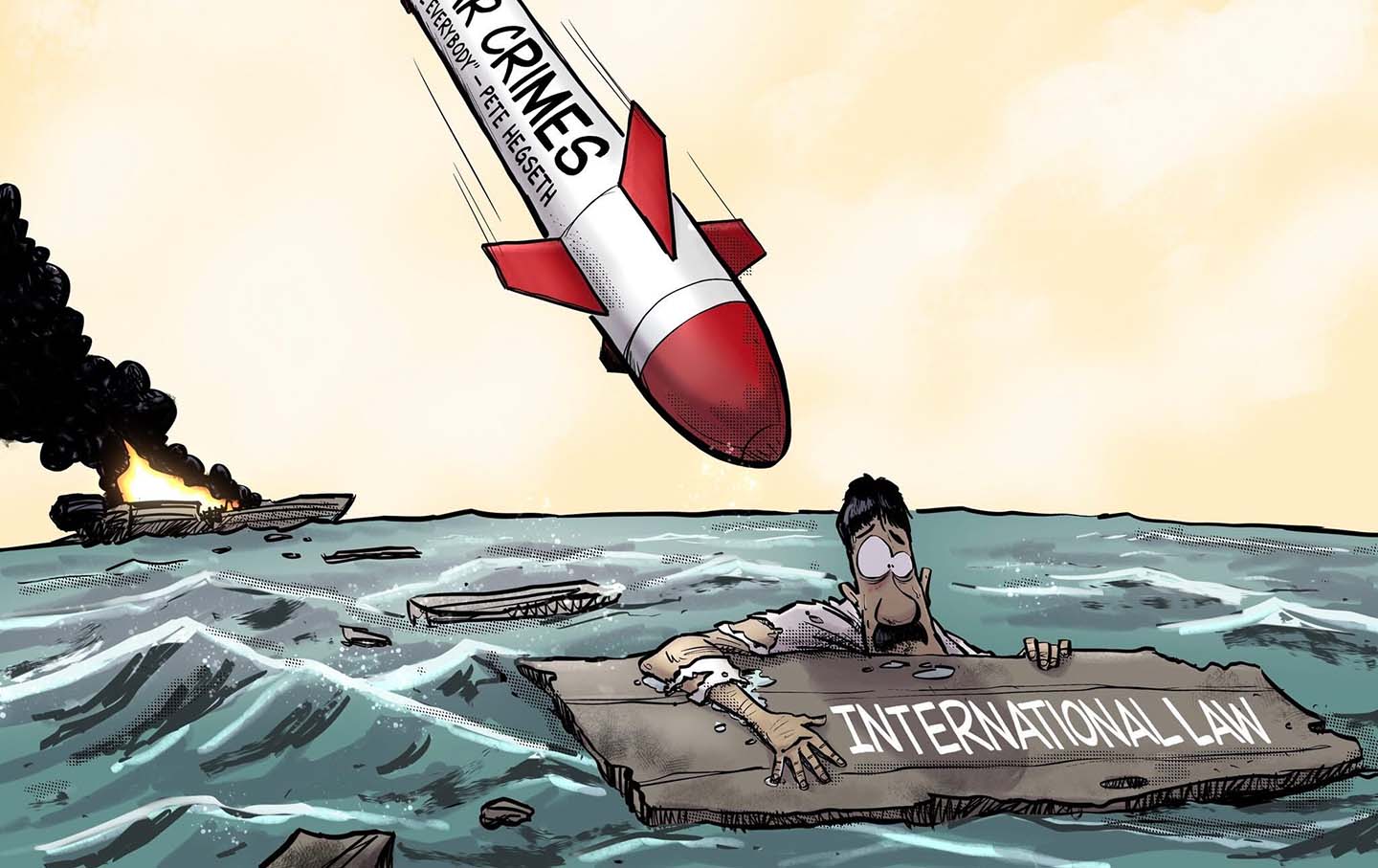Meet Peggy Flanagan, Who Could Become the First Female Native Governor
If Tim Walz becomes vice president, Minnesota’s lieutenant governor would become governor and immediately make history.
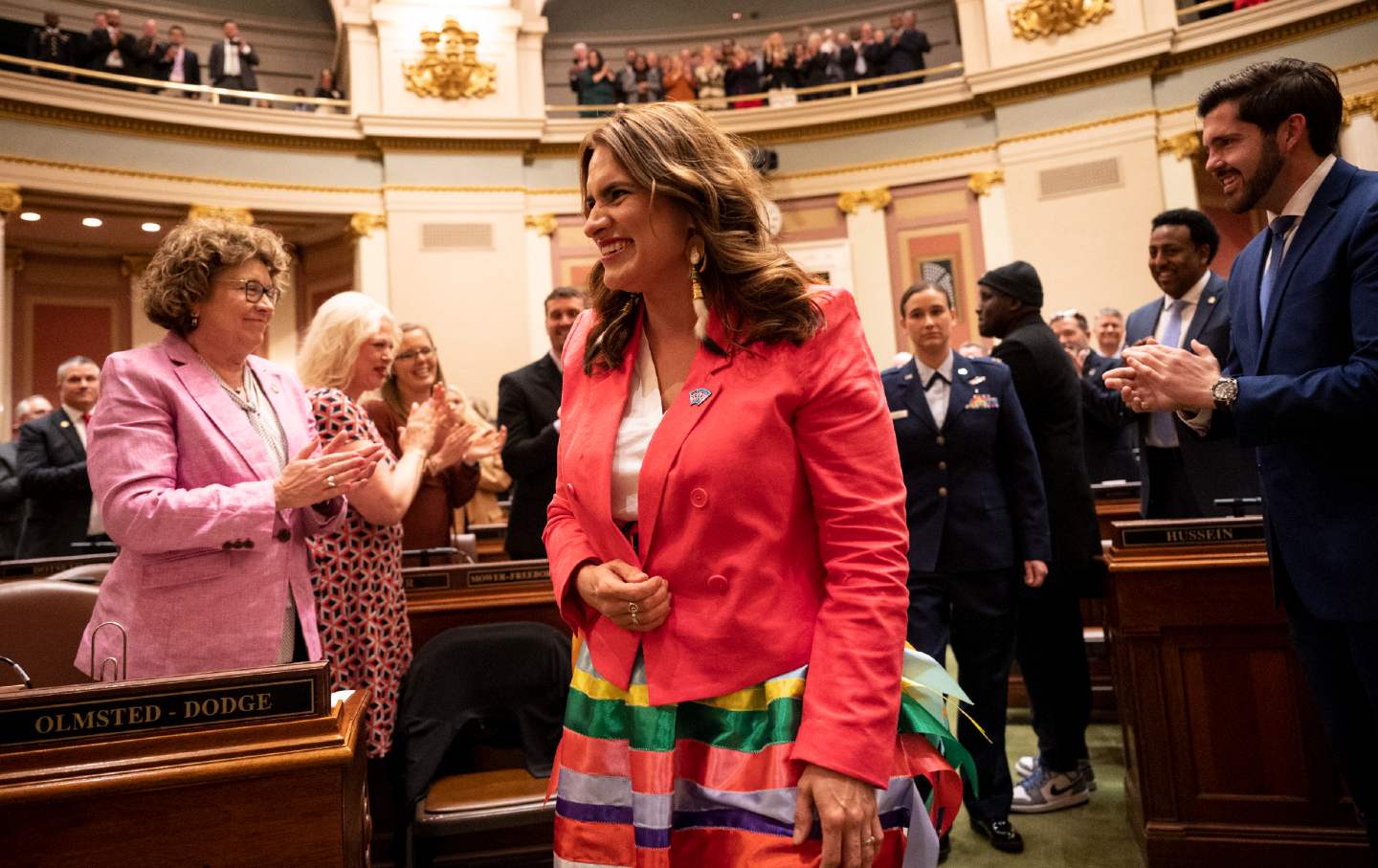
Minnesota Lieutenant Governor Peggy Flanagan, of the Democratic-Farmer-Labor Party, is welcomed into the House chambers for the State of the State address on April 19, 2023, at the Minnesota State Capitol in St. Paul.
(Aaron Lavinsky / Star Tribune via Getty Images)
“Jesus,” I said, “what the hell is that?”
About 10 feet behind the crowd, an enormous Darth Vader–clad cosplayer gripping a red lightsaber emerged from over the hill. He wore a black cloak and a metal headdress with LED lights, and he dragged a giant papier-mâché head of a Native American behind him. It was a scene reminiscent of one of those nasty John Wayne westerns but with a sci-fi spin.
Several of the young Natives immediately rushed the costumed man. One 20-something Ojibwe man asked, “What the hell do you think you’re doing?”
“Well, what we’re all here to do,” the cosplayer said. “Ending Indian mascots.”
“It looks like you’re dragging the head of a dead Native!” the guy shouted. “So, stop!”
It was October 2019, and hundreds of Indigenous people and our allies had gathered at US Bank Stadium in downtown Minneapolis to protest the then-racist name of the Washington NFL team, the Redskins. Suddenly, to my left, appeared Peggy Flanagan, the Democratic lieutenant governor of Minnesota and an enemy to the dehumanization of Indigenous peoples in the form of Indian mascots.
We approached one another. “Nice to meet you,” she said. “I like your work.”
“I like your work,” I responded and shook her hand. Flanagan, an Ojibwe from the White Earth Nation in northwest Minnesota, was one of the afternoon’s speakers, and it was soon time for her to take the stage. The crowd cheered at the sight of her.
“The term [redskins] comes from the scalps—where people were essentially paid a bounty in cash for the scalps of Native American men, women, and children,” she said at the dais, surrounded by other Ojibwes, Dakotas, and Lakotas.
Fast-forward five years and the name of the Washington NFL team is no more. Meanwhile, Flanagan, who once trained oodles of liberals at Camp Wellstone to run for office (including her boss, Governor Tim Walz) could become the first female Indigenous governor in US history.
Flanagan, who grew up on the west side of Minneapolis in St. Louis Park, graduated from the University of Minnesota with a degree in American Indian studies and child psychology. In 2015, she was elected to the House of Representatives, where she championed legislation that benefited children, the poor, and people of color. Flanagan paired with her fellow legislators to launch the state’s first POCI (People of Color and Indigenous) Caucus.
Popular
“swipe left below to view more authors”Swipe →And as lieutenant governor, she even advocated changing the state’s flag, which once depicted the image of a white man tilling the soil as a Native American flees on horseback. “It’s literally a Native person being driven off their land,” she said at the time. “It’s horrific.”
Today, the flag displays a star with a light-and-dark-blue background. The new design is supposed to represent the North Star, the abundance of lakes, the land, and the state bird, the loon, according to Minnesota Secretary of State Steve Simon.
On Wednesday, Flanagan, 44, called me from her car, having just left the state’s annual Farm Fest, a two-day shindig celebrating the state’s farms, farmers, and agribusinesses. I asked her what she thought about the election and about the possibility of becoming the Minnesota governor. She immediately praised the Indigenous leaders, especially women, who worked for decades to pave the way for the next generation. She spoke of Indigenous representation and the old ways that non-Natives are only learning today.
“Dominant culture is just catching on to something we’ve always known, which is that Native women have been leaders since time immemorial,” she told me. “And when we do good work and we deliver, everybody’s lives improve.”
This is true. Historically, for many tribal nations and for literally thousands of years, women chose the chief and sat on various councils. This disturbed early European male colonists, who were not used to seeing a woman sitting across from them, let alone talking politics and making decisions on behalf of the tribe.
In the car, Flanagan was happy to be out of the sun and chug some iced water. I mentioned the reality that we’re the smallest racial minority in our own ancestral land and rarely included in national conversations, especially in political discourse, and then I asked, “How would you describe Indigenous peoples to those who aren’t acquainted or familiar with the Native of today?”
It was, she told me, a heavy question. “We’re beautiful. We are survivors. We’re caretakers of our communities. We’re teachers and scientists, and we’ve always been here,” she said. “We are contemporary people, and of course we’re not a monolith.”
Currently, there are 574 federally recognized tribes, and each tribe and nation is unique in language, politics, customs, cuisine, and spiritualities. Not every tribe lived in tipis and not every nation wore eagle-feather headdresses.
Flanagan lamented, though, that there’s still a need to state the obvious and teach such things, like an “Indigenous 101” every year. She recalled a time when a colleague approached her gobsmacked having just learned that she was, in fact, Native.
“I thought you were all dead!” her colleague, an elected official in the Minnesota State House of Representatives, said at the time.
Not really knowing how to respond, Flanagan shouted, “Surprise!” She considers that exchange, while appalling, “a really important moment” to remind non-Natives that we are still here. “It illustrated the need for people to be in relationship with us,” she said.
Early Tuesday, when news broke that Kamala Harris had chosen Governor Tim Walz as her running mate, Indigenous folks across the country were abuzz, and not because Harris had chosen Walz but because, in accordance with Minnesota’s Constitution, should the Harris-Walz ticket beat out Trump-Vance, Flanagan would assume the governorship and immediately create history.
Celebrity chef Sean Sherman—an Oglala Lakota who owns and operates Owamni, a restaurant in Minneapolis that boasts “‘decolonized’ cuisine” (berries, bison, wild rice, and other foods indigenous to this continent)—gushed at the idea of having a Native female representing his state.
Sherman praised Flanagan for making sure Indigenous peoples are not ignored, that they are seen and heard at the legislature. She has worked diligently to secure economic opportunities for the state’s first peoples. Sherman said that his work “trying to normalize Indigenous foods and create access and education, reconnecting with our ancestral foods and medicines would be much harder” without people like Flanagan, Interior Secretary Debra Haaland, who’s Laguna Pueblo, and Representative Sharice Davids of Kansas, who is of the Ho-Chunk Nation.
More on Indigenous Issues:
Now, a half decade after the protest where Flanagan and I met, the country and the electorate are quickly learning who Flanagan is—the mom, the lieutenant governor, the former member of the Minneapolis school board, and, quite possibly, the next governor of Minnesota. She told me she didn’t think she’d see a woman of color, let alone a Native, in that role, in her lifetime.
Should that come to pass, there will be a thunder of Indigenous jubilation across the United States.
“When I am with other Native folks, and especially young Native girls, I tell them to take up as much space as you can,” she said. “Physically take up space, because you absolutely have the right to be there.”
This is, after all, Native land.
Disobey authoritarians, support The Nation
Over the past year you’ve read Nation writers like Elie Mystal, Kaveh Akbar, John Nichols, Joan Walsh, Bryce Covert, Dave Zirin, Jeet Heer, Michael T. Klare, Katha Pollitt, Amy Littlefield, Gregg Gonsalves, and Sasha Abramsky take on the Trump family’s corruption, set the record straight about Robert F. Kennedy Jr.’s catastrophic Make America Healthy Again movement, survey the fallout and human cost of the DOGE wrecking ball, anticipate the Supreme Court’s dangerous antidemocratic rulings, and amplify successful tactics of resistance on the streets and in Congress.
We publish these stories because when members of our communities are being abducted, household debt is climbing, and AI data centers are causing water and electricity shortages, we have a duty as journalists to do all we can to inform the public.
In 2026, our aim is to do more than ever before—but we need your support to make that happen.
Through December 31, a generous donor will match all donations up to $75,000. That means that your contribution will be doubled, dollar for dollar. If we hit the full match, we’ll be starting 2026 with $150,000 to invest in the stories that impact real people’s lives—the kinds of stories that billionaire-owned, corporate-backed outlets aren’t covering.
With your support, our team will publish major stories that the president and his allies won’t want you to read. We’ll cover the emerging military-tech industrial complex and matters of war, peace, and surveillance, as well as the affordability crisis, hunger, housing, healthcare, the environment, attacks on reproductive rights, and much more. At the same time, we’ll imagine alternatives to Trumpian rule and uplift efforts to create a better world, here and now.
While your gift has twice the impact, I’m asking you to support The Nation with a donation today. You’ll empower the journalists, editors, and fact-checkers best equipped to hold this authoritarian administration to account.
I hope you won’t miss this moment—donate to The Nation today.
Onward,
Katrina vanden Heuvel
Editor and publisher, The Nation
More from The Nation
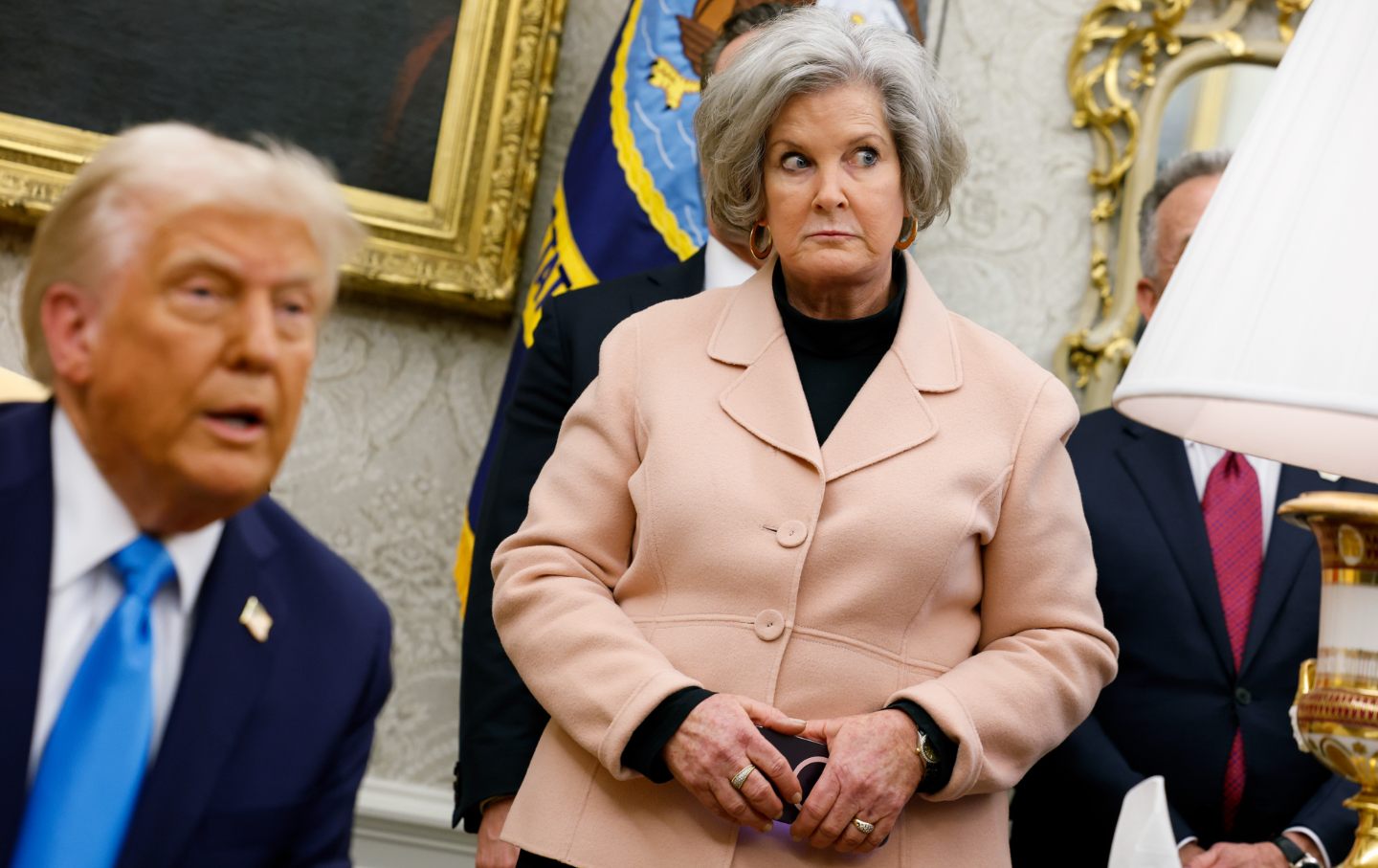
The Shocking Confessions of Susie Wiles The Shocking Confessions of Susie Wiles
Trump’s chief of staff admits he’s lying about Venezuela—and a lot of other things.
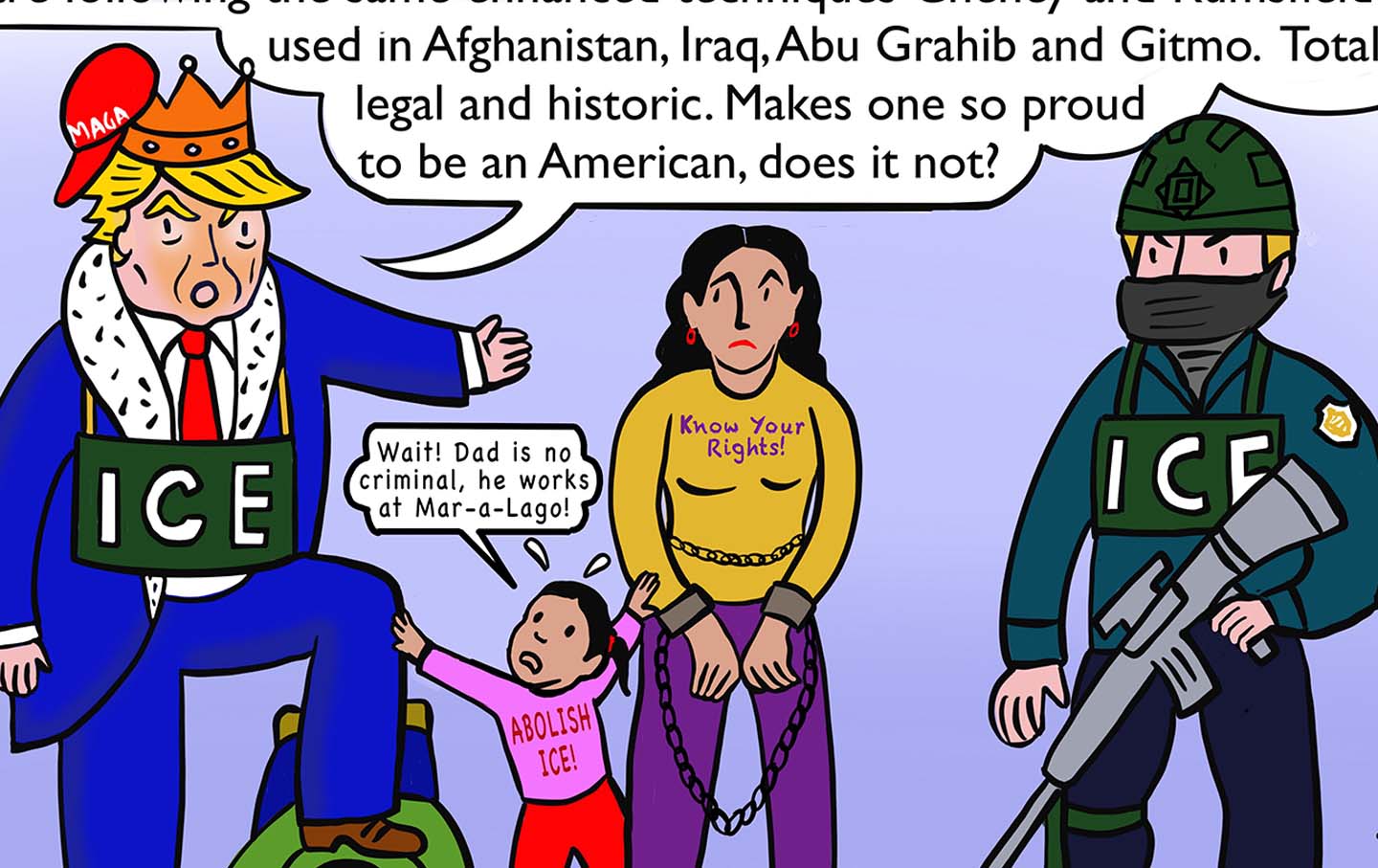
The King of Deportations The King of Deportations
ICE’s illegal tactics and extreme force put immigrants in danger.
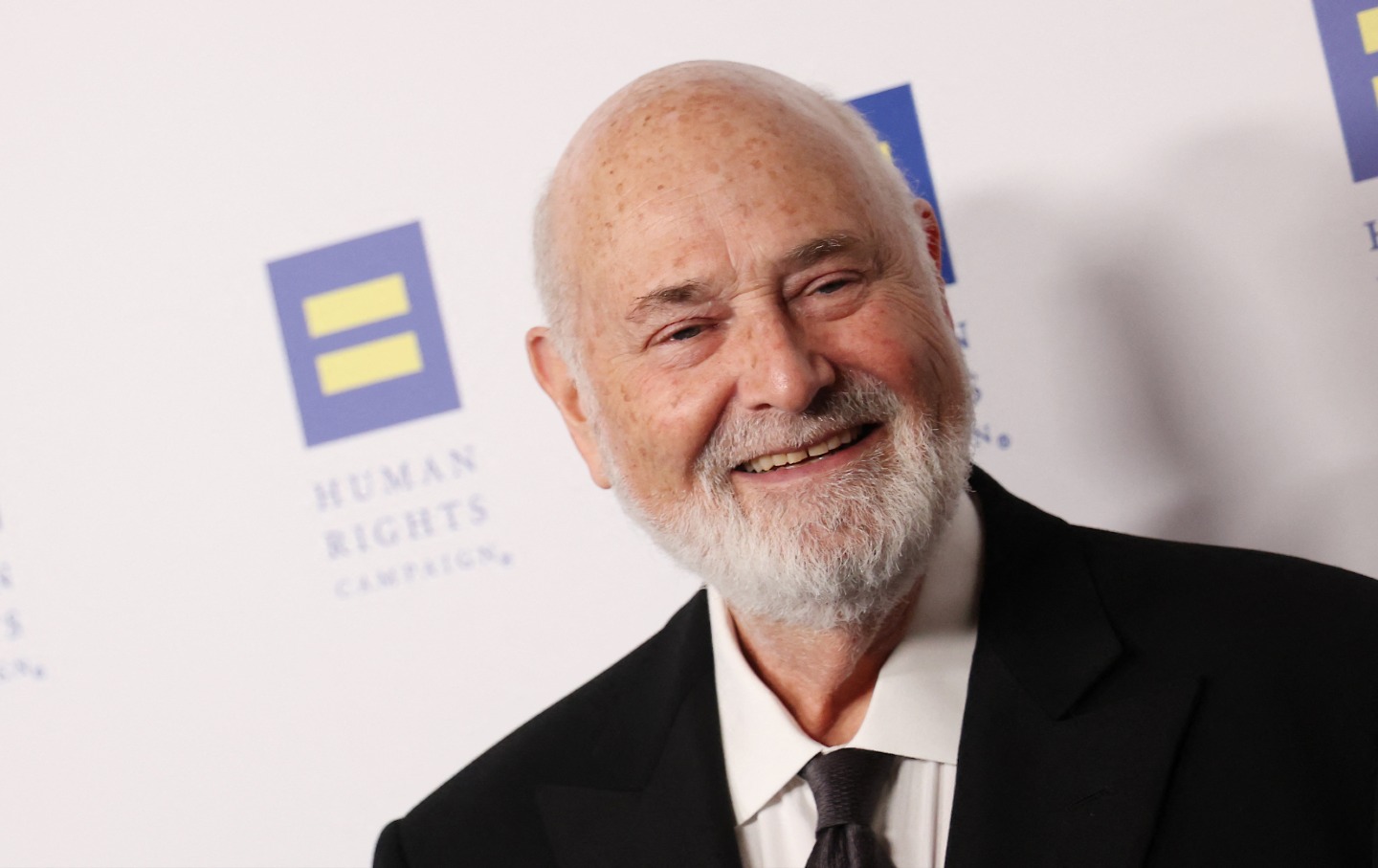
How Rob Reiner Tipped the Balance Against Donald Trump How Rob Reiner Tipped the Balance Against Donald Trump
Trump’s crude disdain for the slain filmmaker was undoubtedly rooted in the fact that Reiner so ably used his talents to help dethrone him in 2020.
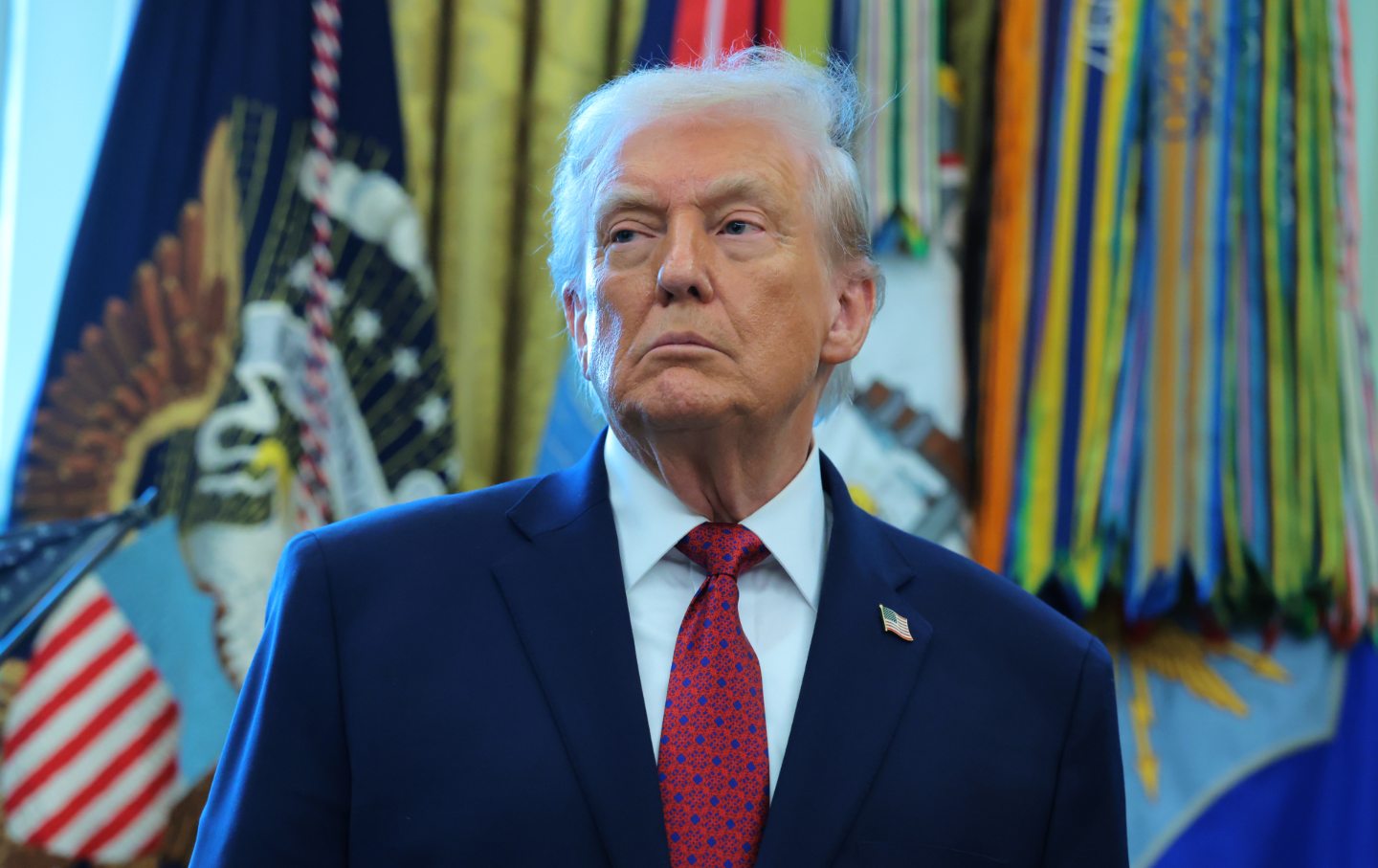
The Economy Is Flatlining—and So Is Trump The Economy Is Flatlining—and So Is Trump
The president’s usual tricks are no match for a weakening jobs market and persistent inflation.
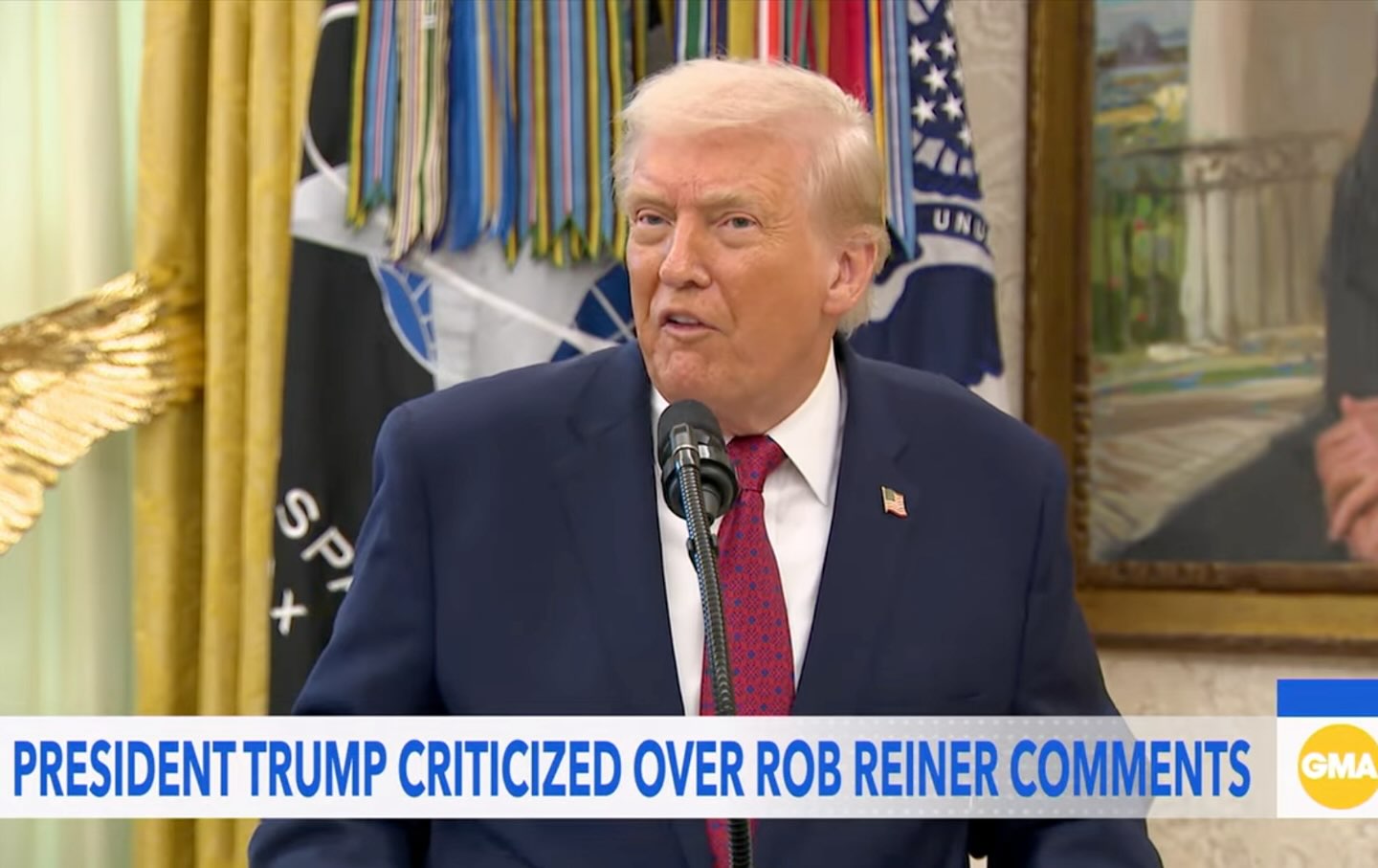
Trump’s Vile Rob Reiner Comments Show How Much He Has Debased His Office Trump’s Vile Rob Reiner Comments Show How Much He Has Debased His Office
Every day, Trump is saying and doing things that would get most elementary school children suspended.

